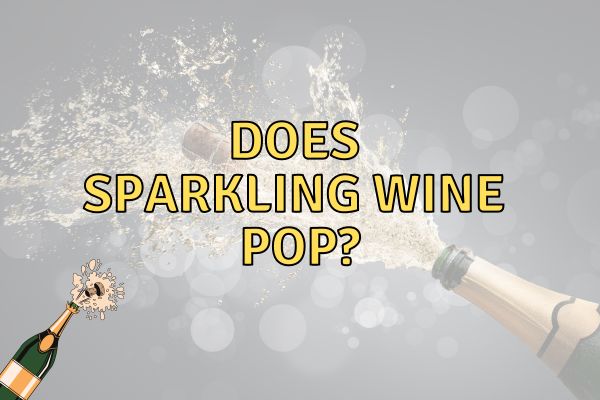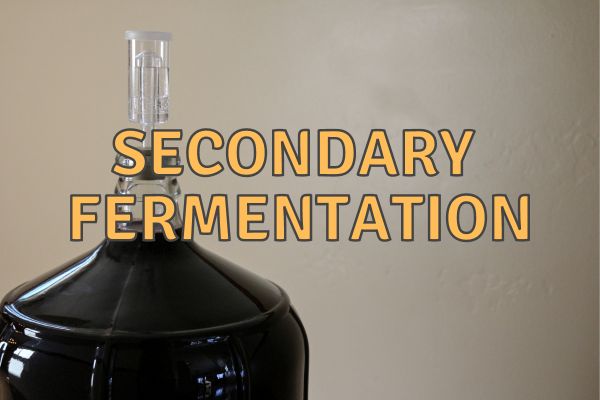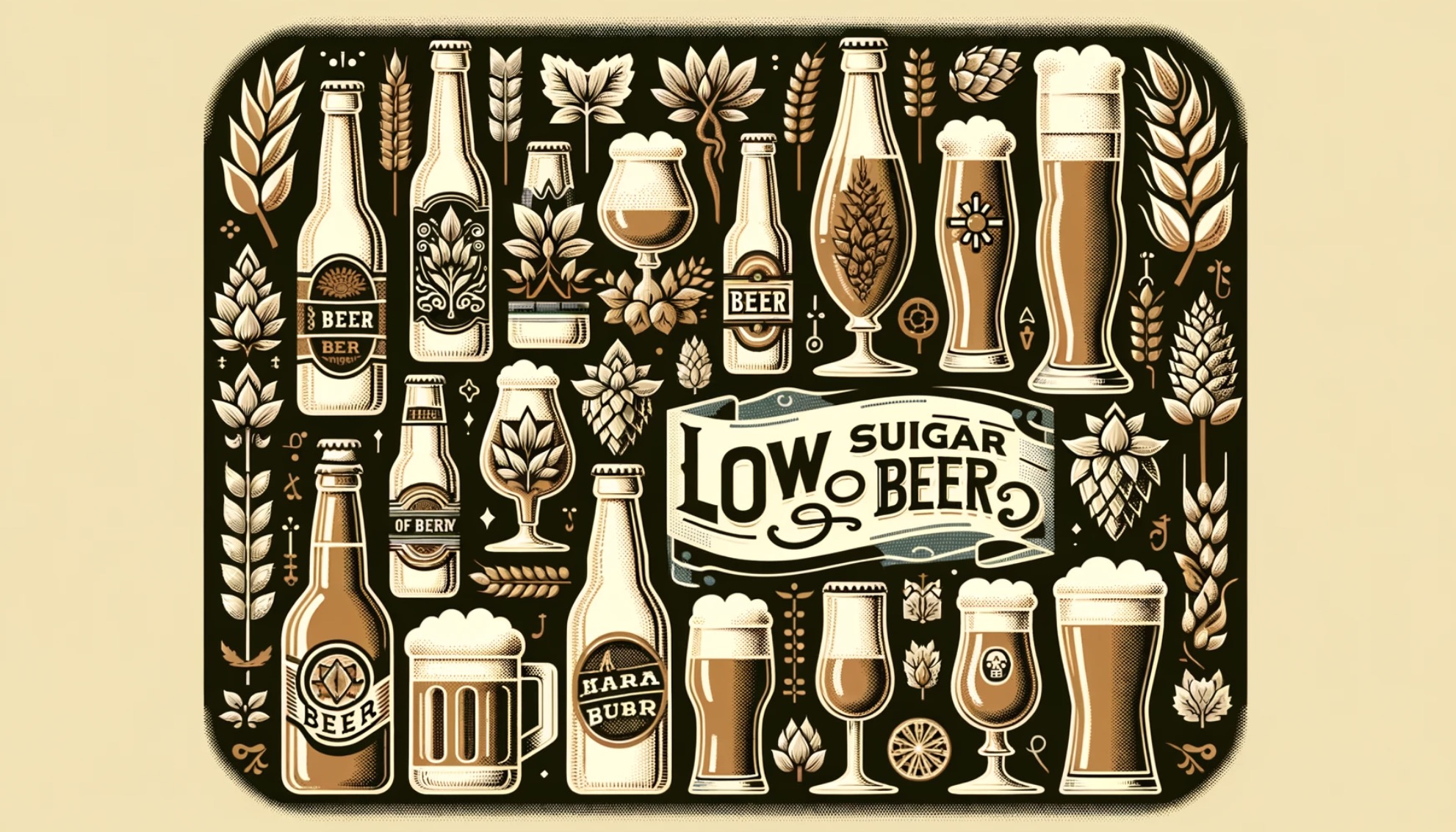Sparkling wine and Champagne are often used interchangeably, but they are not the same. While both are fizzy and delightful, they have distinct characteristics that set them apart.
One question that often arises is whether sparkling wines have some of the same festive qualities as Champagne.
In this blog post, we will explore the similarities and differences between these two bubbly beverages, and answer the question:
Will sparkling wine pop like Champagne?
Yes, sparkling wines (and ciders!) with a high bottle pressure will pop like Champagne when opened, as both beverages contain carbon dioxide, which creates the fizz and pressure that leads to the distinctive pop.
However, the intensity of the pop may vary depending on the type and quality of the sparkling wine.
1. Differences between Sparkling Wine and Champagne
Before we delve further into the differences and similarities between sparkling wine and Champagne, it’s important to understand their origins.
Sparkling wine is a term used to describe any wine with significant levels of carbon dioxide, making it fizzy. It can be produced anywhere in the world and is made from various grape varieties.
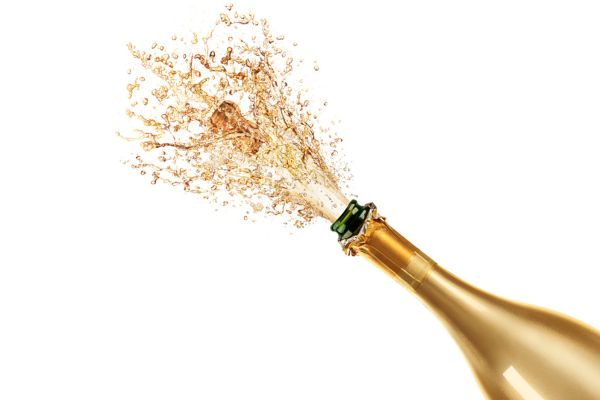
On the other hand, Champagne is a type of sparkling wine that comes exclusively from the Champagne region of France. It is made primarily from three grape varieties: Chardonnay, Pinot Noir, and Pinot Meunier.
The name “Champagne” is protected under the Appellation d’Origine Contrôlée (AOC) system, which means that only sparkling wines produced in this region using specific methods can be called Champagne.
2. The Production Process
Both sparkling wine and Champagne undergo a similar production process, but there are some key differences that contribute to their unique characteristics. The primary difference lies in the method used to create the bubbles.
a. Traditional Method (Méthode Champenoise)
This method is used to produce Champagne and some high-quality sparkling wines, such as Cava from Spain and Crémant from other regions of France. The process involves two fermentations, with the second fermentation taking place in the bottle.
During the first fermentation, the grapes are pressed, and the juice is fermented into a still wine. The wine is then blended, and a mixture of sugar and yeast (called the liqueur de tirage) is added.
The bottles are sealed with a temporary cap, and the second fermentation takes place inside the bottle, producing carbon dioxide.

The bottles are then aged on their lees (dead yeast cells) for a minimum of 15 months for non-vintage Champagne and 3 years for vintage Champagne. This aging process contributes to the complex flavors and textures found in Champagne.
b. Tank Method (Charmat Method)
The tank method is used to produce many sparkling wines, such as Prosecco and some American sparkling wines. Instead of the second fermentation taking place in the bottle, it occurs in a large, pressurized tank. Once the second fermentation is complete, the wine is bottled under pressure to maintain the bubbles. This method is quicker and less labor-intensive than the traditional method but generally results in wines with simpler flavors and less complexity.
3. The Pop: What Causes It?
The pop associated with opening a bottle of sparkling wine or Champagne is due to the release of carbon dioxide pressure built up inside the bottle during the second fermentation.
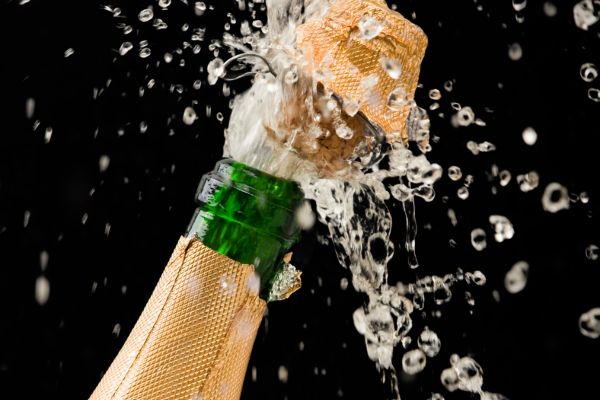
The pressure inside a bottle of Champagne or sparkling wine can be anywhere from 70-90 pounds per square inch (psi), which is about three times the pressure in a car tire.
When the bottle is opened, the pressure is suddenly released, causing the cork to pop and the wine to fizz. The intensity of the pop can vary depending on factors such as the type of sparkling wine, the production method, and the quality.
4. The Ideal Way to Open a Bottle
To safely open a bottle of sparkling wine or Champagne without losing too much of the precious liquid, follow these steps:
1. Ensure the bottle is well-chilled (around 45-48°F, or 7-9°C).
2. Remove the foil and wire cage (muselet) while keeping your thumb on the cork.
3. Hold the bottle at a 45° angle, with the cork facing away from you and others.
4. Grasp the cork firmly with one hand, and use the other hand to turn the bottle (not the cork) slowly.
5. Allow the pressure to ease the cork out gently, ideally with a soft hiss rather than a loud pop.
5. The Taste: How Do Sparkling Wine and Champagne Compare?
Although both sparkling wine and Champagne are bubbly, their taste can differ significantly due to factors such as grape varieties, production methods, and terroir.
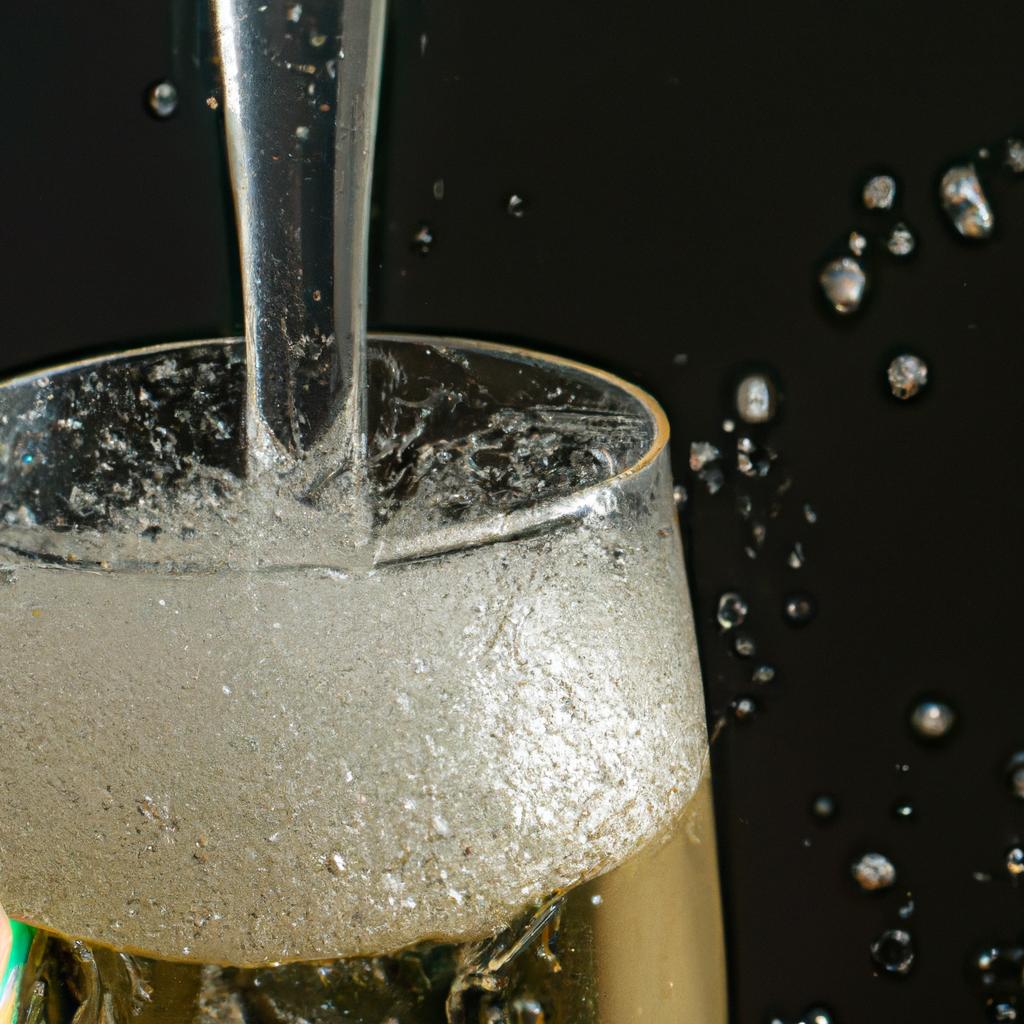
Champagne is known for its complex flavors and fine bubbles, with notes of brioche, citrus, and minerality. Sparkling wines made using the traditional method can also have complex flavors, but those produced using the tank method may be fruitier and less complex.
6. Pairing with Food
Both sparkling wine and Champagne are incredibly versatile when it comes to food pairings. Their acidity and effervescence work well with a wide range of dishes, from appetizers to desserts. Champagne is often enjoyed with seafood, such as oysters and caviar, while sparkling wines like Prosecco can be paired with lighter dishes, such as salads and fruit-based desserts.
7. Price Differences
Champagne tends to be more expensive than other sparkling wines due to factors such as production costs, aging requirements, and the prestige associated with the Champagne name. However, there are many affordable and high-quality sparkling wines available from other regions that offer a similar effervescent experience without the hefty price tag.
9. The Takeaway
As a brewer and wine enthusiast, I have had the pleasure of tasting (and opening!) a wide variety of sparkling wines and Champagnes.
I have found that while there are some exceptional Champagnes on the market, there are also many sparkling wines that provide a delightful and satisfying experience – including a good pop when opening!
Some of my personal favorites include Crémant de Bourgogne from France, Franciacorta from Italy, and Cava from Spain.
In conclusion, yes, sparkling wine will pop like Champagne, as the carbon dioxide present in both creates the pressure and fizz that leads to the iconic pop. However, the intensity of the pop may vary depending on factors such as the type and quality of the sparkling wine.
To wrap up, here are 10 facts about sparkling wine and Champagne:
1. Sparkling wine can be produced anywhere in the world, while Champagne comes exclusively from the Champagne region of France.
2. Champagne is made primarily from Chardonnay, Pinot Noir, and Pinot Meunier grapes.
3. The traditional method (Méthode Champenoise) is used to produce Champagne and some high-quality sparkling wines.
4. The tank method (Charmat Method) is used to produce many sparkling wines, such as Prosecco.
5. The pressure inside a bottle of Champagne or sparkling wine can be 70-90 psi.
6. The pop is caused by the release of carbon dioxide pressure built up inside the bottle during the second fermentation.
7. Champagne is known for its complex flavors and fine bubbles, while sparkling wines can vary in taste depending on the production method and grape varieties.
8. Both sparkling wine and Champagne are versatile in food pairings.
9. Champagne tends to be more expensive than other sparkling wines.
10. There are many high-quality and affordable sparkling wines available from various regions around the world.
FAQs
Can you pop sparkling wine?
Yes, you can pop sparkling wine, but it is not recommended as it can be dangerous and result in injury or damage to property. It is safer to open sparkling wine using the traditional method of gently twisting the cork while holding the bottle at a 45-degree angle.
Can you pop a bottle of champagne?
Yes, you can pop a bottle of champagne. However, it is important to do so safely and responsibly, as the pressure inside the bottle can cause the cork to fly out with force. It is recommended to hold the cork and twist the bottle gently to release the pressure slowly.
Does sparkling wine still pop?
Yes, sparkling wine still pops when opened due to the release of carbon dioxide gas that is trapped in the bottle during the fermentation process.
Does Prosecco pop like Champagne?
Yes, but not as hard as champagne does! Prosecco does not pop like Champagne. Champagne is carbonated much harder through a secondary fermentation process in the bottle, which creates a lot of pressure and causes the cork to pop when opened. Prosecco, on the other hand, is carbonated through a tank method, which results in less pressure and a softer, gentler pop when opened.
Can sparkling wine be used as Champagne?
No, sparkling wine cannot be used as Champagne because Champagne is a legally protected term that refers specifically to sparkling wine produced in the Champagne region of France using specific methods and grape varieties.
How to make sparkling wine pop?
The popping sound of sparkling wine is caused by the release of carbon dioxide when the bottle is opened. To make the wine pop, ensure that it is chilled to the proper serving temperature (around 40°F) and then gently twist the bottle while holding the cork firmly to loosen it. Slowly and steadily apply pressure to the cork until it pops out with a satisfying sound.

